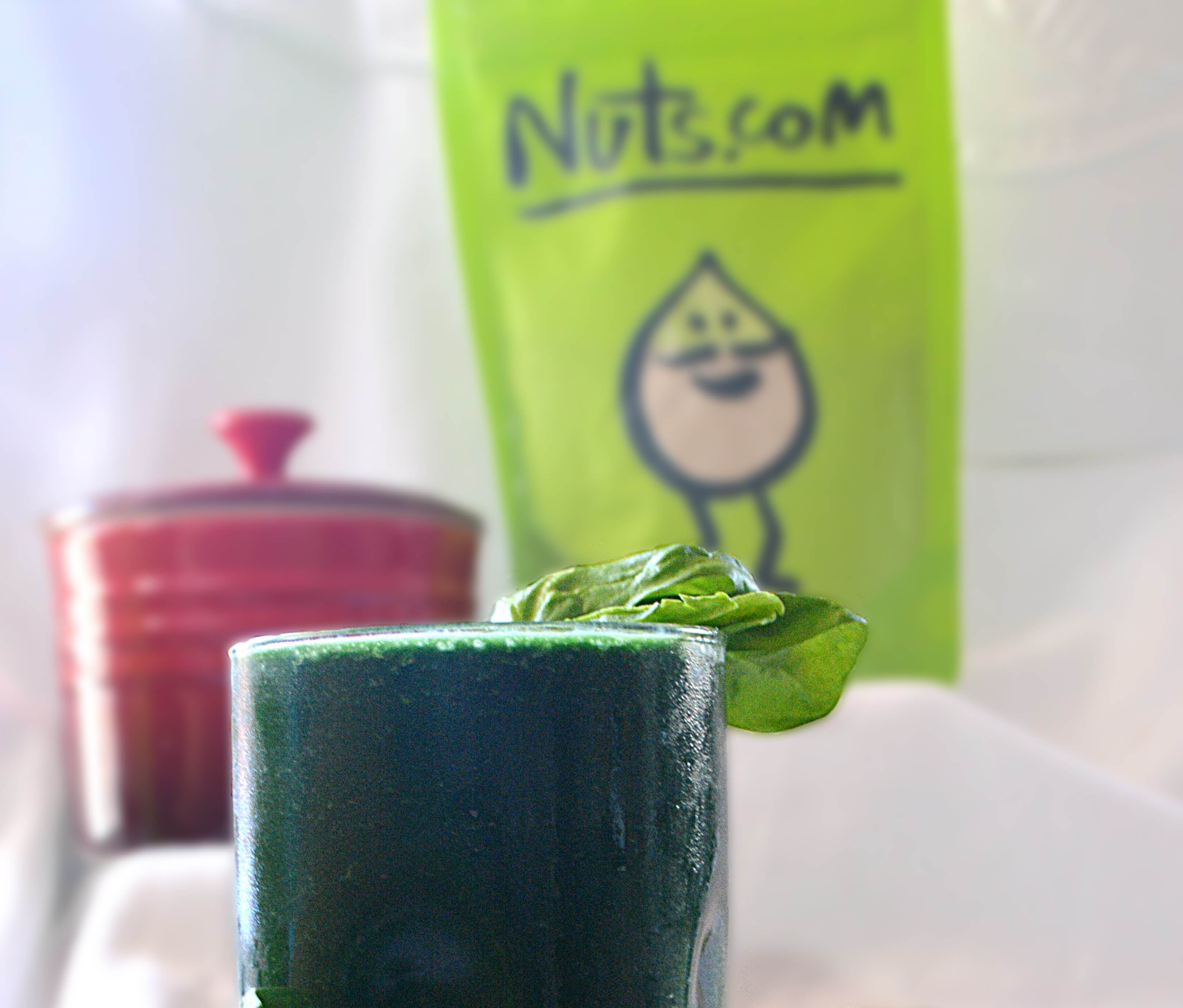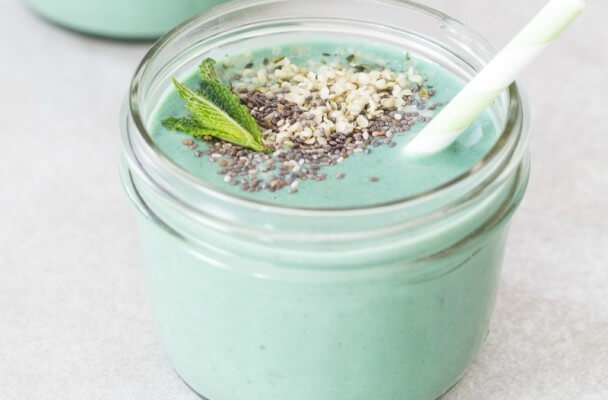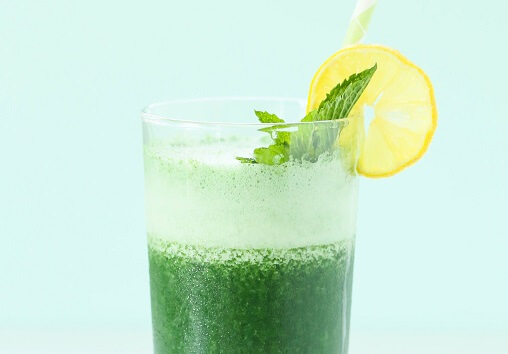How Many of These 7 Rare Superfoods Have You Tried?

It seems that “superfoods” are all anyone is talking about these days. There are no predetermined criteria to determine which foods qualify as a superfood; however, these foods tend to be chock full of vitamins, minerals, and antioxidants such as polyphenols or flavonoids (Mitchell, 2014). Perhaps the most buzzed about superfoods include kale and quinoa. These foods are so trendy that they have become almost ubiquitous on restaurant menus and supermarket shelves. While these foods certainly earn their superfood designation, they only scratch the surface of what a superfood can be. Step outside of the box with these rare superfoods that have an impressive repertoire of nutritional benefits.
Sacha Inchi
The Peruvian highlands have given us quinoa, but they are home to another superfood called sacha inchi. Sacha inchi seeds come from the rainforest vine, Plukenetia volubilis. The ancient Incan people harvested these seeds from star-shaped pods and prized them for their taste and nutritive properties. The flavor of sacha inchi seeds is unique, with a mild nutty quality complemented by a slightly woody undertone. The seeds contain omega-3, omega-6, and omega-9 fatty acids in a balanced proportion (Brady, 2008). In particular, sacha inchi seeds are very high in alpha linoleic acid (ALA), a type of omega-3 fatty acids with beneficial effects on cardiovascular functioning (Guillen et al., 2003). Sacha inchi seeds can be eaten plain as a snack or enjoyed as a salad topping for their nutty crunch.
Goji Berries
Goji berries, also known as wolfberries, are a brightly colored berries that have been enjoyed for millennia in China and the Himalayas. Ancient Chinese medicine has long promoted the use of goji berries as a remedy for eye and liver problems. Modern science has demonstrated that these berries are a source of vitamin A, vitamin B2, vitamin C, calcium, potassium, zinc, and selenium (Carey, 2014). Additionally, goji berries contain five carotenoid compounds and several phenolic pigments that have been associated with antioxidant activity.
In the United States, goji berries are often eaten dried, although fresh berries have an amazing flavor if you can get your hands on them. Try mixing goji berries with almonds and dark chocolate for an antioxidant-rich trail mix. Or, stir some into your morning oatmeal or yogurt for a superfood boost. Adding dried berries to your favorite tea also allows them to plump up for a more enjoyable texture.
Camu Camu
Camu camu is another Amazonian superfood that is just beginning to gain traction in the United States and Europe. Camu camu fruit shrubs grow in regions of the Amazon rainforest in Peru, Colombia, Brazil, and Venezuela that undergo seasonal flooding. Similar in appearance to a lemon except for its light orange color, camu camu fruit is very high in vitamin C, potassium, and the amino acids valine, leucine, and serine (Coles, 2013). In fact, just one teaspoon of camu camu powder contains well over 100% of the Daily Value (DV) for vitamin C intake! Camu camu powder is also a source of antioxidants such as gallic acid and ellagic acid.
Lucuma Powder
The pulpy orange and yellow lucuma fruit was traditionally known as the “gold of the Incas” for its beneficial properties. Lucuma contains iron, zinc, calcium, vitamin B3, and beta-carotene. The lucuma fruit tastes sweet with maple undertones. It is a relatively low glycemic index food, meaning that it does not cause large increases in blood sugar. Enjoy this fruit by stirring a spoonful of lucuma powder into your morning smoothie or stirring it into your coffee in lieu of sweetener.
Amaranth
Amaranth is a grain native to Mexico and Central America. This naturally gluten-free grain is a heart addition to any diet. There are actually more than 60 different species of the amaranth plant, three of which yield edible seeds that we know as the grain amaranth. Amaranth is a protein powerhouse, containing approximately 14% protein by unit weight (Whole Grains Council, n.d.). In fact, amaranth is a complete protein, meaning that it contains all of the essential amino acids your body cannot produce itself.
There are many ways to incorporate this superfood into your diet. Swap amaranth for your favorite grain to make flavorful pilafs, add it to breads or cereals, or pop amaranth grains as an alternative to popcorn.
Teff
Teff is an ancient grain that has been grown in Ethiopia for hundreds of years. Approximately the size of poppy seeds, teff comes in several varieties of different colors. Its mild and nutty flavor makes it the perfect accompaniment to any number of delicious dishes. When ground, teff creates a high-protein flour that can be used to make bread, pancakes, or pie crusts (Teff Co, n.d.).
Spirulina
Spirulina is a type of algae that can be found from freshwater or saltwater sources. It is typically sold in pill or powder form, making it easy to mix the plant into a smoothie or fruit juice without altering the taste. Spirulina is an excellent source of protein, at 62% protein by weight, giving your body the amino acids it needs to create new cells and to maintain your tissues. It also contains B complex vitamins, vitamin E, beta-carotene, zinc, copper, manganese, selenium, and essential fatty acids (University of Maryland Medical Center, 2014).
Superfood Recipes
The following recipes make use of the superfoods listed above to supply a delicious means of adding the selections to your diet. For more superfoods, including a list of superfood snacks, recipes and ingredients- check out our superfood page here.

Protein-Packed Detox Smoothie Recipe {vegan}
This superb smoothie can act as a post-workout elixir aimed at restoring your energy levels and supporting a healthy recovery, or it can act as a meal replacement for a quick breakfast shake in the morning. Enjoy the benefits offered by spirulina when paired with mint, almond milk, bananas, hemp protein, chia seeds, and hemp hearts.
Ingredients: Almond milk, frozen banana, spirulina, hemp protein powder (optional), fresh mint, chia seeds, hemp hearts.
Total Time: 5 minutes
| Yield: 2 servings

Spirulina Smoothie Recipe
Another spirulina smoothie, this superb blend of the superfood also includes lemon juice, apple juice, banana, and spinach. The result is a drink that offers a nutritious refreshment to enjoy on a hot summer afternoon with a tantalizingly tart taste that you’re certain to love.
Ingredients: Spirulina, banana, fresh spinach, apple juice, crushed ice, lemon juice.
Total Time: 2 minutes
| Yield: 2 smoothies

Chocolate Goji Berry Bars Recipe {gluten-free}
These scrumptious energy bars include the nutritious goji berries amidst a medley of other delectable flavors, including a crunchy base of quinoa puffs. The bars are topped with dark chocolate for an additional boost in antioxidants and a supremely rich flavor.
Ingredients: Pitted dates, almond butter, quinoa puffs, goji berries, raw pistachios, coconut oil, dark chocolate chips.
Total Time: 20 minutes
| Yield: 8 bars

Mint Chocolate Popsicle Recipe {vegan}
These marvelous mint chocolate popsicles are a sweet treat that is ideal for enduring the heat of the sweltering summer. In addition to their minty flavor, the topping of dark chocolate makes these treats all the more mouthwatering. Spirulina and cacao add a boost of nutrients so you can enjoy health benefits in an otherwise indulgent treat.
Ingredients: Coconut cream, cacao powder, cacao nibs, maple syrup, spirulina, mint extract, coconut oil, dark chocolate chips (vegan)
Total Time: 30 minutes
| Yield: 7 popsicles
Healthy Eating
- Healthy Snacks
- Healthy Meals
- Healthy Recipes
- Sports Nutrition
- Nutrition and Special Diets
- 21 Day Fix
- 5 Popular Diet Similarities
- Alkaline Diet
- Anti-Inflammatory Diet
- Calorie Counting
- Carb Cycling Diet
- Celiac Disease
- Cholesterol
- Clean Eating
- Crohn's Disease
- DASH Diet
- Detox Diet
- Diabetes
- Diabetes Diet
- Diet Pill Dangers
- Fat Burning Foods
- Gluten-free Diet
- Glycemic Index
- Heart Health
- High Blood Pressure Diet
- High Fiber Foods
- How to Eat Healthy
- How to Lower Blood Pressure
- Hypertension
- IBS Diet
- Ketogenic Diet
- Liquid Diet
- Low GI Foods
- Low-Carb Diet and Foods
- Low-Fat High-Carb Diet
- Mediterranean Diet
- Mediterranean Diet Foods
- Military Diet
- Nutrition Labels Explained
- Paleo Diet
- Raw Food Diet
- Superfoods
- Sustainable Weight Loss
- Thrive Diet
- Vegan Diet
- Vegetarian Diet
- Weight Loss Shakes
- Whole30
- Vitamins, Minerals & Nutrients
